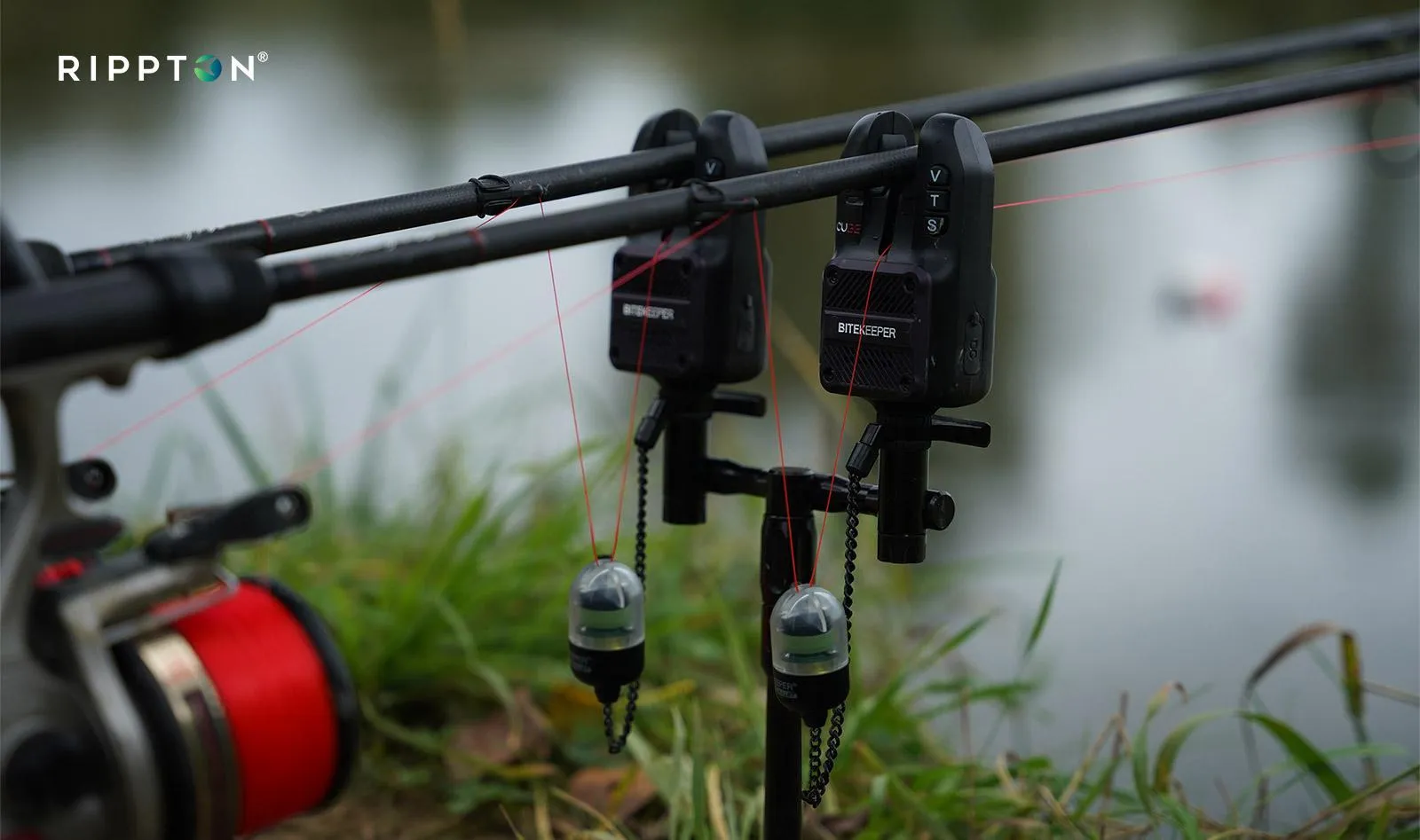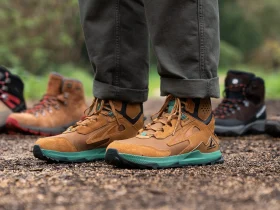Fishing has come a long way, and today’s anglers have access to some of the most advanced tools the sport has ever seen. Among these innovations are bite alarms and bobbins, indispensable for many fishing enthusiasts seeking the perfect catch. But one major question remains—does adding a bobbin to your bite alarm setup make a real difference?
This blog delves into the debate over using bobbins with bite alarms, uncovering the pros and cons and providing insights to help you make an informed decision about your fishing style.
Understanding Bite Alarms and Bobbins
Before deciding whether to use a bobbin with your bite alarm, it’s important to understand what these tools bring to your fishing game.
What Are Bite Alarms?
Bite alarms are electronic devices designed to notify you when a fish bites. From subtle twitches to full-on runs, they alert anglers with audible or visual signals, ensuring you never miss a moment—even when you’re not staring at your line.
Modern bite alarms, like the Rippton BITEKEEPER Cube Fishing Bite Alarm, even come with receiver capabilities, allowing anglers to monitor multiple lines easily. Following are the standard Smart BITEKEEPER Cube Bite Alarm’s key features
- 500m Extended Bluetooth Range for Reliable Coverage
- 1mm Precision Bite Detection for Ultimate Sensitivity
- Durable All-Weather Performance with IP66 Protection
- App-Integrated Bite Logging for Enhanced Tracking
- 10 Adjustable Alarm Levels with Multi-Color LED Alerts
- Long-Lasting 30-Day Rechargeable Battery (Includes 6-Month Warranty)
- Rubber Inlays Designed to Protect and Fit Fishing Rods Seamlessly
What Are Bobbins, and What Are They Used for?
Bobbins serve as a powerful addition to your bite alarm system. These small, weighted indicators hang on your fishing line between the reel and the alarm, offering visual clues about line movement. They allow you to detect smaller bites or drops that might not trigger the bite alarm on their own.
How Do Bite Alarms and Bobbins Work Together?
When used together, bite alarms alert your ears, while bobbins guide your eyes. This combo enhances bite detection, letting you act quickly, whether a fish pulls the line forward or slackens it in a subtle drop-back.
The Case for Using Bobbins with Bite Alarms
Adding a bobbin to your system might seem like an extra step, but it can significantly amplify your fishing experience. Here’s why many anglers swear by this combination:
1. Enhanced Sensitivity
Bobbins provide an extra layer of bite detection sensitivity. Even the tiniest nibble becomes noticeable whether you’re targeting carp, catfish, or pike. This can make a big difference, especially in areas where fish are cautious.
2. Visual Indication of Line Movement
While bite alarms emit sound, bobbins offer a visual reference. Watching the bobbin rise and fall can help you quickly distinguish between a proper run and a random tap.
3. Versatility in Different Conditions
Bobbins excel in various fishing conditions, from windy days to murky waters. Their ability to stabilize the line movement ensures accurate detection, regardless of weather.
4. Improved Line Management
A bobbin adds an element of tension control, making it easier to maintain consistent pressure on your line. This ensures better hooksets and reduces the chances of losing a fish. Try the Rippton Silver Bullet Bobbin for extra precision, which is known for its visibility and reliability.
5. Affordable Enhancement
While advanced bite alarms can get pricey, bobbins are a cost-effective way to boost your Setup. They’re readily available and easy to integrate into your system.
When You Might Not Need a Bobbin
Despite their advantages, bobbins aren’t always necessary. Consider these scenarios where they may not be suitable:
Fishing in Snaggy Areas
If you’re fishing in spots with many underwater obstructions, the added tension from a bobbin can increase the likelihood of snagging. Using a bite alarm without a bobbin might be the safer choice here.
Specific Fishing Techniques
Certain fishing styles, like lure or float fishing, don’t typically require bobbins. The continuous motion and direct contact with the line make them redundant.
Personal Preference
Some anglers prefer to keep their setups minimal. Experienced fishers comfortable with bite alarms alone might opt to skip bobbins.
Choosing the Right Bobbin for Your Setup
If you decide to add a bobbin to your fishing gear, here’s what to keep in mind:
Types of Bobbins
- Hanging Bobbins: These classic bobbins dangle below your line and are ideal for calm conditions.
- Hockey Stick Bobbins: These bobbins attach firmly to the line and are great for stability in windy or turbulent weather.
- Custom Carp Bobbins: Unique designs tailored to specific needs, such as visibility or weight, like the Rippton Firefly Bivvy Light Bobbin.
Factors to Consider
- Weight: Heavier bobbins work best in strong winds, while lighter ones are better for subtle bites.
- Adjustability: Look for bobbins with adjustable tension for different fishing situations.
- Visibility: Brightly colored or illuminated bobbins help in low-light or night fishing.
Best Bobbins for Carp Fishing
For carp enthusiasts, checking out products like the Rippton Silver Bullet Best Fishing Bobbins ensures a reliable and high-quality addition to your Setup.
- Compact bobbins: ideal for carp & sea fish slack lines
- 10m range for precise bobbin bite indicators action
- 7-day standby for reliable fishing line bobbin
- IP66 waterproof for all-weather bobbins fishing
- Stepless sensitivity for best indicator bobbins
- App & wristband integration as fishing bobbin parts
Setting Up Your Bite Alarm and Bobbin System
Here’s a simple guide for getting started:
- Attach Your Bite Alarm to your rod pod or bank stick.
- Thread the Bobbin onto your fishing line.
- Position Your Line so that it rests between the bite alarm’s rollers.
- Adjust the Bobbin’s Height to suit your tension preference.
- Test the Setup by gently pulling the line to ensure both the alarm and bobbin respond accurately.
Tips for Optimal Performance:
- Set the bobbin’s height around 2 inches below the alarm.
- Use isotopes or illuminated bobbins for night fishing.
- Regularly check your Setup to avoid tangles or misalignment.
Advanced Techniques and Customization
Anglers looking to fine-tune their Setup can explore advanced options:
Sensitivity Adjustment
Modern bite alarms, like the Rippton BITEKEEPER Cube, allow customizable sensitivity settings, ensuring the perfect balance for different fishing conditions.
Custom Made Bobbins
For unique needs, custom carp bobbins provide options like specific weights, colours, or materials to suit your style. They’re perfect for enthusiasts who want to stand out while achieving peak performance.
Integration with Technology
Advanced systems like the Rippton BITEKEEPER Cube Bite Alarm with Receiver link your alarms and bobbins to your smartphone, enabling convenient monitoring from a distance.
Final Thoughts on Bobbins with Bite Alarms
Whether you need a bobbin with your bite alarm depends on your fishing preferences and conditions. While bobbins enhance bite detection, add versatility, and improve line management, they may not be essential for every type of fishing.
For those interested in upgrading their Setup, products like the Rippton BITEKEEPER Cube Carp Bite Alarms and Silver Bullet Bobbin deliver unparalleled performance and innovation.
Explore Your Options
Visit the Rippton Store to discover the perfect bite alarms and bobbins for your adventure. Take your fishing game to the next level—because every catch starts with the right tools.







Leave a Reply